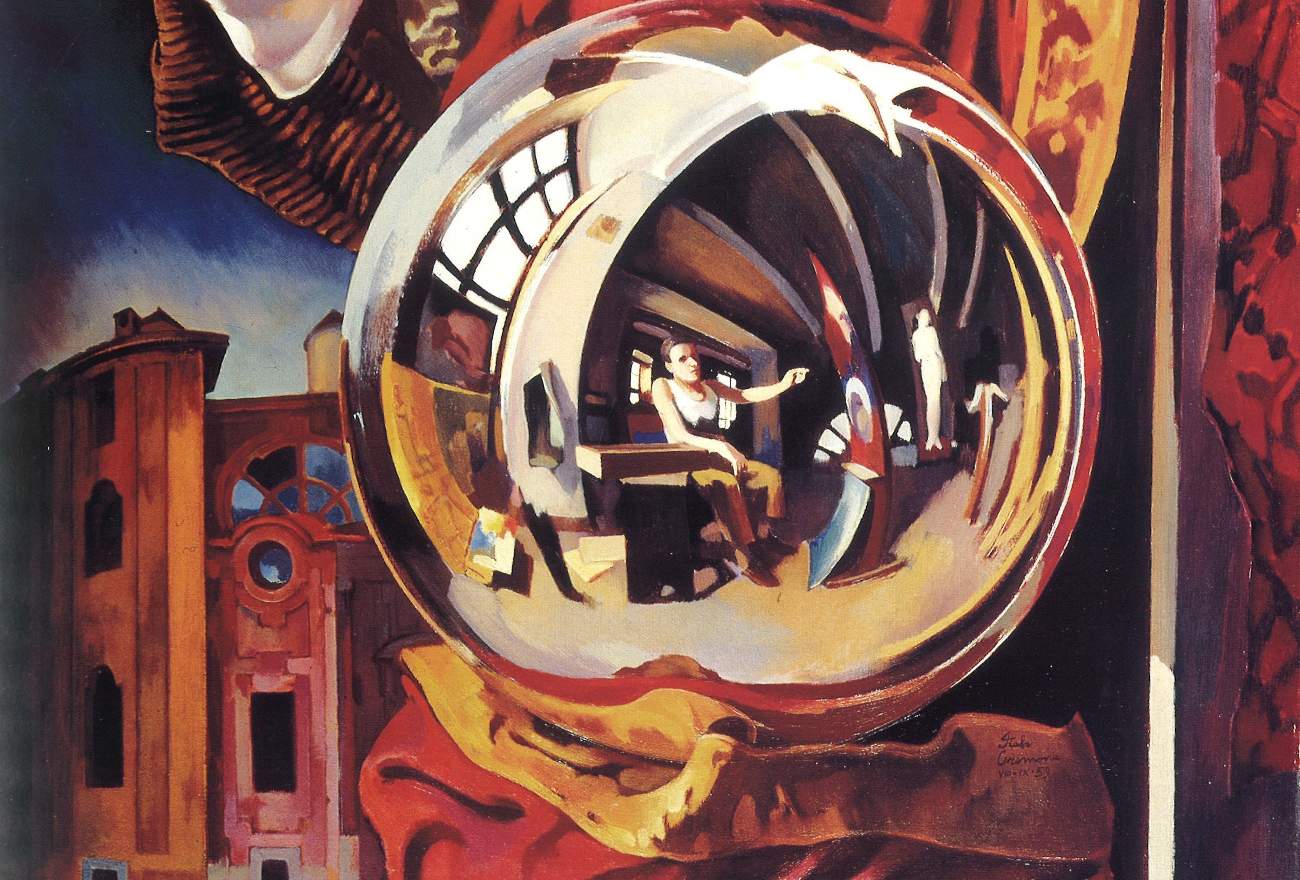The GAM in Turin is dedicating an exhibition to Italo Cremona (Pavia, 1905 - Turin, 1979) entitled Tutto il resto è profondo notte (Everything else is deep night); it is curated by Giorgina Bertolino, Daniela Ferrari and Elena Volpato and can be visited from April 24 to September 15, 2024. The exhibition is a collaboration between GAM and Mart in Rovereto, where the exhibition will move next fall from Oct. 18, 2024 to Jan. 26, 2025. Cremona, an eccentric painter-writer, explores the expressive territory of night through dreams, nightmares, fantastic images and nocturnal scenarios. All the rest is deep night is thus a title-sign, the key chosen to trace an exhibition path dedicated to the entire arc of Italo Cremona’s painting. The exhibition brings together a hundred paintings, drawings and engravings and documents the artist’s highest pictorial quality, rereading in the present the originality of his imagery. Starting with the nucleus of works belonging to the GAM collection (fromSelf-Portrait in the Studio of 1927 to Metamorphosis of 1936, to Winter of 1940), theanthological exhibition counts on a series of loans from museums, including the Mart, a partner in the project(Composizione con lanterna, 1926 and La Libra, 1929), the Musei Civici Luigi Barni in Vigevano (with Dialogo tra una conchiglia e un guantone da scherma from 1930 and a cohesive nucleus of visionary paintings from the 1940s-1950s), the Accademia Albertina di Belle Arti and the Musei Reali - Galleria Sabauda in Turin.
The exhibition is accompanied by a catalog published by Allemandi, with essays by the curators and a wealth of iconographic material. The exhibition follows the temporal evolution of Cremona’s creative seasons, highlighting in some rooms his distinctive elements, such as specific reflections of an iconographic and poetic nature that the artist explored repeatedly over time. The central room of the itinerary, designated as the Hall of Wonders, is devoted to the exploration of the fantastic and surreal. The facade room examines Turin architecture, a distinctive pictorial theme developed by the artist over the decades. Although seemingly devoid of any human presence, the silent facades of painted buildings and houses actually reveal their role as the wings of a secret city theater, constantly alluding to a space beyond the visible. The nature of the large production of nudes is explored by highlighting works in which the traditional academic exercise is transformed into a visionary production of epiphanies, manifestations of otherness and small hallucinations that confuse the reality of the model’s body with the pictorial segmentation of its details. Alternating dreamlike or uncanny images with the more visceral and painterly approach of his work, the exhibition highlights the most contemporary and relevant aspects of Cremona’s work and his figure as an eccentric intellectual, involved in a variety of creative fields and akin, in his peculiar interpretation of the twentieth century, to other eccentric figures in Turin such as Carlo Mollino and Carol Rama.
Italo Cremona was born in Pavia on 1905 and died in Turin in 1979. He was an interpreter of a broad conception of art expressed through painting, art history, critical and narrative writing, working as a set designer for film and theater, and teaching art disciplines. In 1911, he moved to Turin. Here, he graduated in Law in 1927, the year in which he made his debut at the Amici dell’Arte exhibition at the Promotrice. Free from narrow affiliations, he collaborated with Mino Maccari and his magazine Il Selvaggio, was friends with Carlo Mollino, hung out with Felice Casorati, and in the early 1930s met Alberto Savinio. He exhibited in Turin, then at the Quadriennale in Rome in 1931 and 1935, while in 1932 he was at the Venice Biennale, where he would be present continuously from the 1930s to the 1950s. His first solo exhibition opened in 1933 at the Galleria il Cenacolo in Genoa. In 1937 he began working for the cinema with the set designs for Pietro Micca by Aldo Vergano, created at Cinecittà in Rome. From here on, Cremona would take on the positions of set designer, decorator, costume designer, screenwriter, and assistant director, collaborating on some 20 films, including Sotto la Croce del Sud, belonging to the colonial cinema strand, Carmela, La contessa di Castiglione, Calafuria and Dagli Appennini alle Ande. For the theater, he did the set design for Sem Benelli’s L’orchidea, performed in Rome, and Garçia Lorca’s Nozze di sangue at the Teatro Gobetti in Turin. In 1939 he married Danila Dellacasa, with whom in 1944 he moved to Venice where he enrolled in the I Biennium of Architecture at IUAV.
Painting activity was then intertwined with teaching and the publication of articles, art books and novels. In 1946 he obtained the chair of Decoration at the Albertina Academy of Fine Arts in Turin, where he taught until 1955, the year in which he founded the Turin State Institute of Art, which he directed until 1975. He collaborated with the magazine Il Primato, 1940-1942, authored the Acetylene column in the pages of Paragone, from 1951-1957, and created the magazine Circolare Sinistra, 1955. He published monographs dedicated to Cino Bozzetti and Felice Casorati and was attentive to the reinterpretation of movements and phenomena of art history. In 1968 his first novel, The Tail of the Comet, was published; in 1976 Improper Weapons; while in 1977 the collection of short stories Zona ombra was published.

 |
| GAM in Turin and Mart in Rovereto dedicate an exhibition to Italo Cremona, painter-writer of nocturnes |
Warning: the translation into English of the original Italian article was created using automatic tools. We undertake to review all articles, but we do not guarantee the total absence of inaccuracies in the translation due to the program. You can find the original by clicking on the ITA button. If you find any mistake,please contact us.